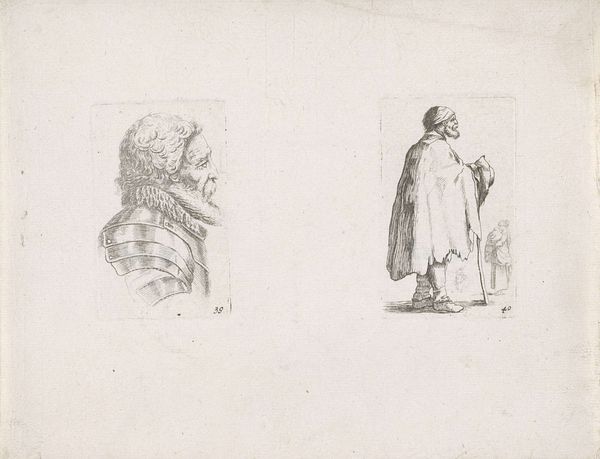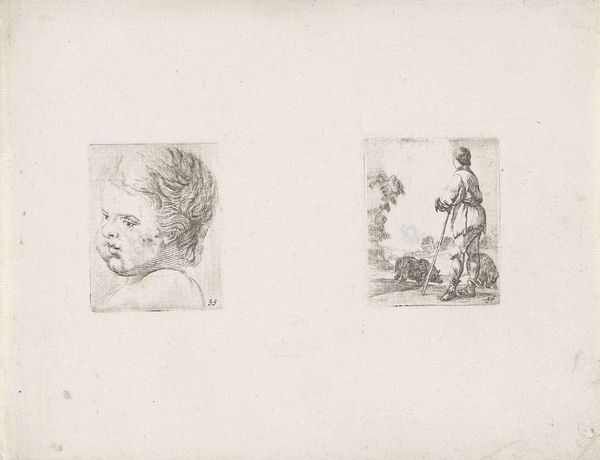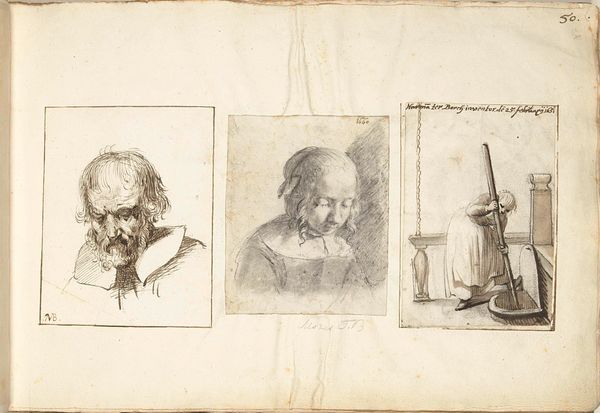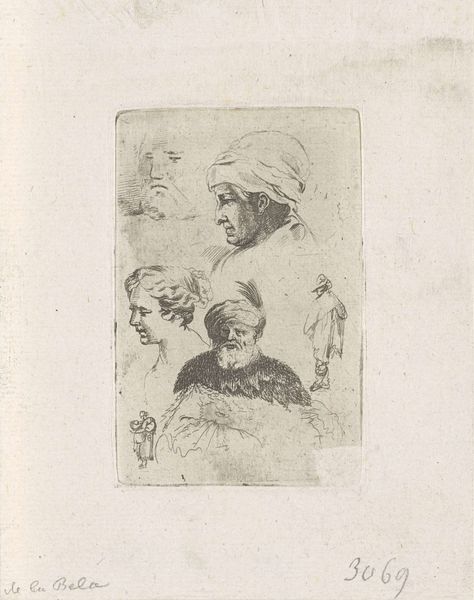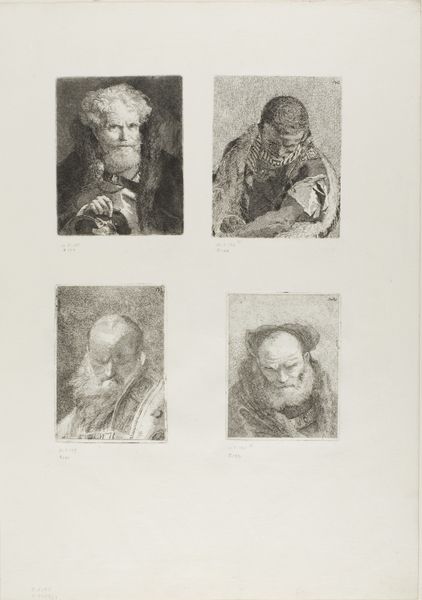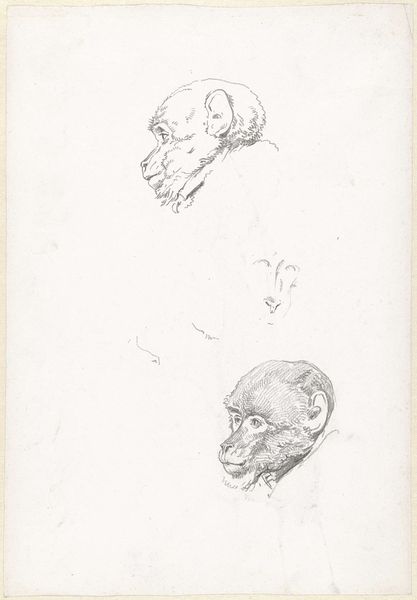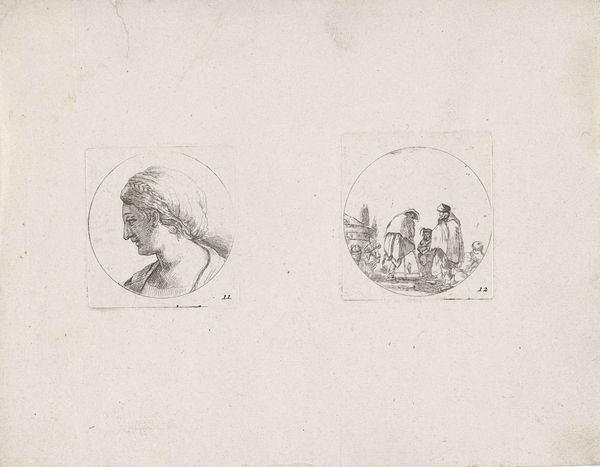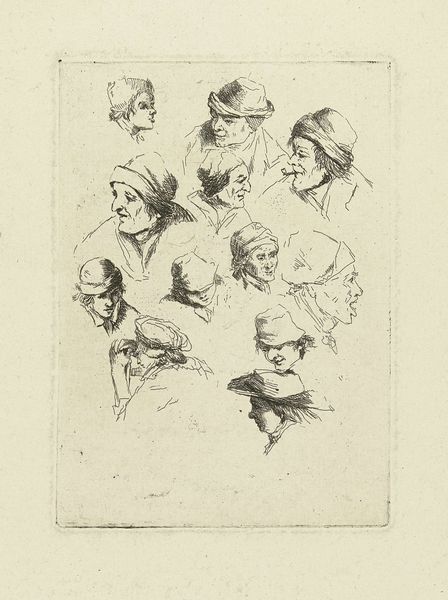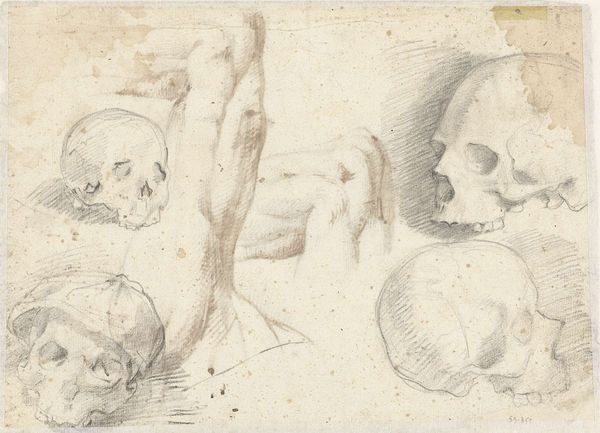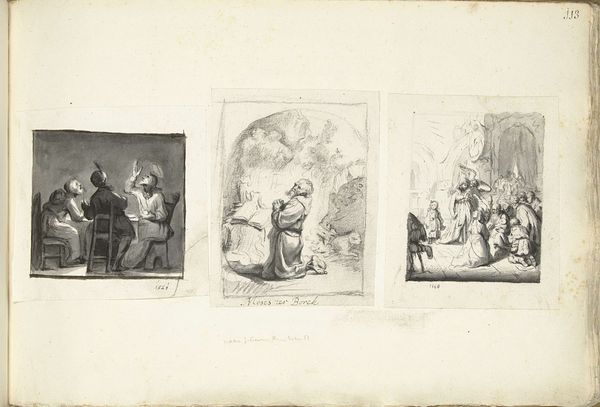
drawing, pencil
#
portrait
#
drawing
#
baroque
#
pencil
#
academic-art
Dimensions: height 74 mm, width 49 mm, height 77 mm, width 50 mm
Copyright: Rijks Museum: Open Domain
Curator: Looking at this sheet of sketches titled "Studies van hoofden en twee staande figuren," dating roughly from 1620 to 1664 and held here at the Rijksmuseum, the first thing that strikes me is the raw intimacy of it. The artist, listed as Anonymous, really captures ephemeral moments, like stolen glances or figures caught in passing. Editor: It’s interesting to consider how these sketches relate to artistic training. The materials—pencil on paper—speak volumes. This was about practice, skill-building, and exploring the capabilities of the artist’s tools. These figures aren't highly finished pieces but rapid studies, probably generated by observation. Was the availability and affordability of drawing materials influencing who had access to art education at the time? Curator: Exactly! Academic art was certainly reliant on that apprenticeship model. These types of studies allowed artists to hone their craft, observe light and shadow, and build a repertoire of poses and expressions, then disseminate it into workshops where knowledge gets further codified and controlled. Consider the composition too. It lacks formal structure, implying a sketchbook, constantly in use as the artist engaged with daily life, rather than something made for public view. Editor: I agree. This was less about public performance and more about the quiet labour of observation. Are the people depicted in those drawings from life, I wonder? What status or background do we believe those people were from? Curator: While identifying the figures is hard, there is a timeless quality to the representation of the human form that would find broad appeal in different social strata and beyond national boundaries, not unlike popular types or character types in theatre, if you will. Editor: Thinking about its journey, from the artist’s hand to now residing in the collection of the Rijksmuseum, reveals an elevation of function, where sketches like these are now being considered artworks in their own right, instead of mere aides in the artistic process. That’s some significant status change. Curator: And so, examining these sheets today, we see both a record of practice and a glimpse into a particular approach to image-making and representation. Editor: Absolutely, this drawing invites us to consider the entire artistic ecosystem, rather than just celebrating the final creation.
Comments
No comments
Be the first to comment and join the conversation on the ultimate creative platform.
